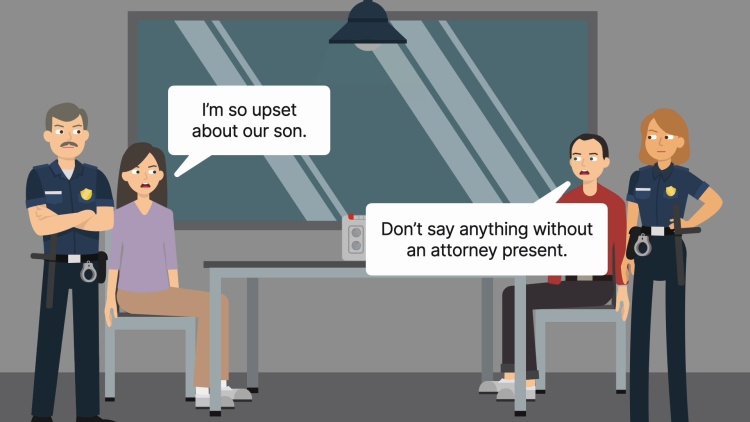Arizona v. Mauro
United States Supreme Court
481 U.S. 520 (1987)
- Written by Salina Kennedy, JD
Facts
William Mauro (defendant) was arrested for the murder of his son and taken to the police station. Police advised Mauro of his Miranda rights, Mauro invoked his right to counsel, and police stopped questioning him. Mauro’s wife was also in police custody at the station in connection with the murder. Mrs. Mauro repeatedly told Detective Manson, the officer who was questioning her, that she wanted to speak with Mr. Mauro. Manson was hesitant to grant her request but discussed it with his supervisor and was told to allow Mrs. Mauro to speak to Mr. Mauro, to tape record the conversation, and not to leave the two alone. Manson brought Mrs. Mauro into the room where Mr. Mauro was being held, placed his tape recorder on a table, and recorded the Mauros’ conversation. During the conversation, Mr. Mauro repeatedly admonished Mrs. Mauro to be quiet and not to answer questions without a lawyer present. At his trial, Mr. Mauro raised the insanity defense. The prosecution played the recording of the Mauros’ conversation to rebut Mr. Mauro’s defense. Mr. Mauro moved to suppress the recording on the theory that his conversation with Mrs. Mauro had been a police interrogation and had violated Mr. Mauro’s right to counsel. The Arizona Supreme Court reversed the trial court’s denial of Mr. Mauro’s motion, holding that the conversation in question was an interrogation conducted in violation of Mr. Mauro’s right to counsel. The United States Supreme Court granted certiorari.
Rule of Law
Issue
Holding and Reasoning (Powell, J.)
Dissent (Stevens, J.)
What to do next…
Here's why 899,000 law students have relied on our case briefs:
- Written by law professors and practitioners, not other law students. 47,000 briefs, keyed to 994 casebooks. Top-notch customer support.
- The right amount of information, includes the facts, issues, rule of law, holding and reasoning, and any concurrences and dissents.
- Access in your classes, works on your mobile and tablet. Massive library of related video lessons and high quality multiple-choice questions.
- Easy to use, uniform format for every case brief. Written in plain English, not in legalese. Our briefs summarize and simplify; they don’t just repeat the court’s language.





